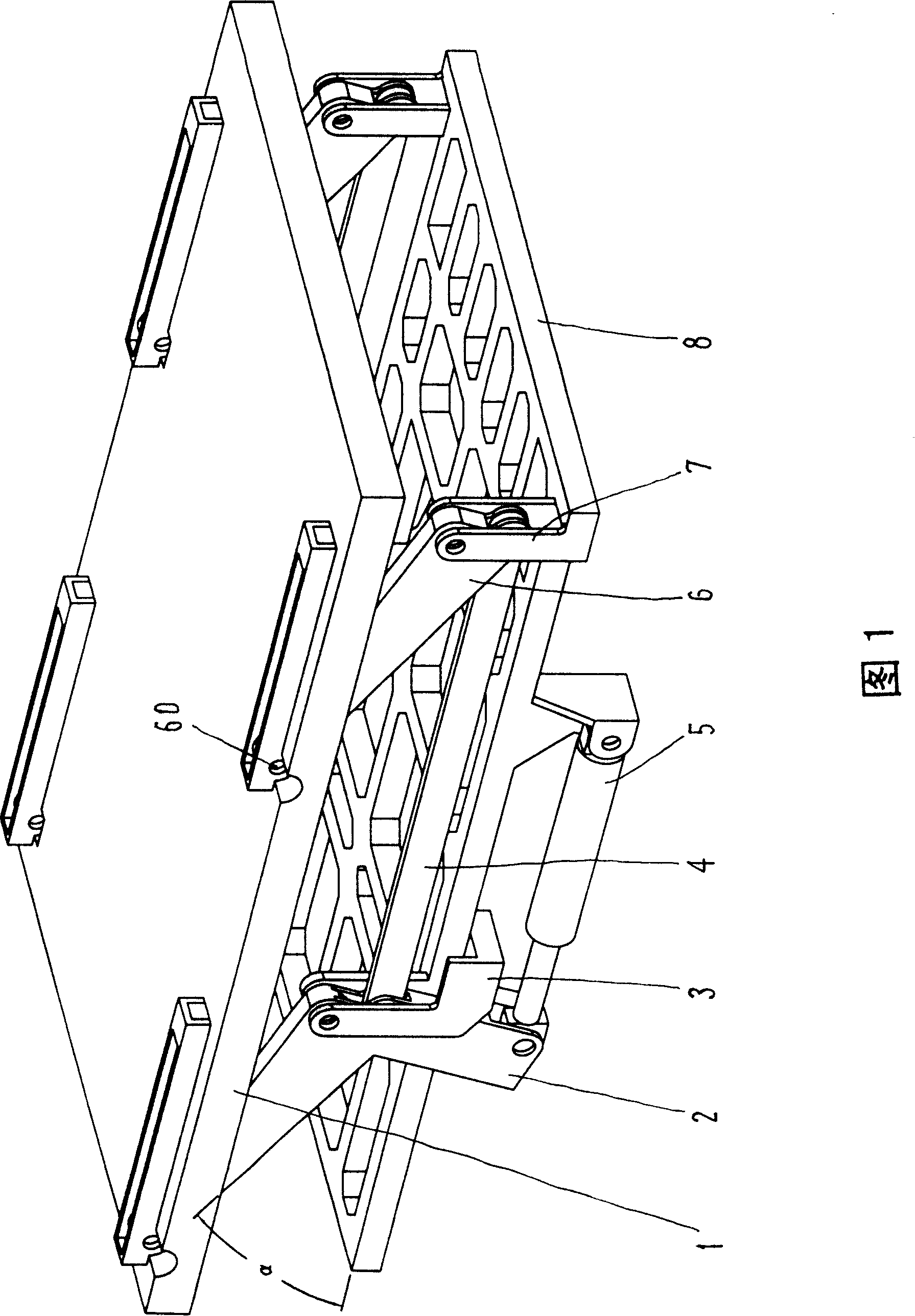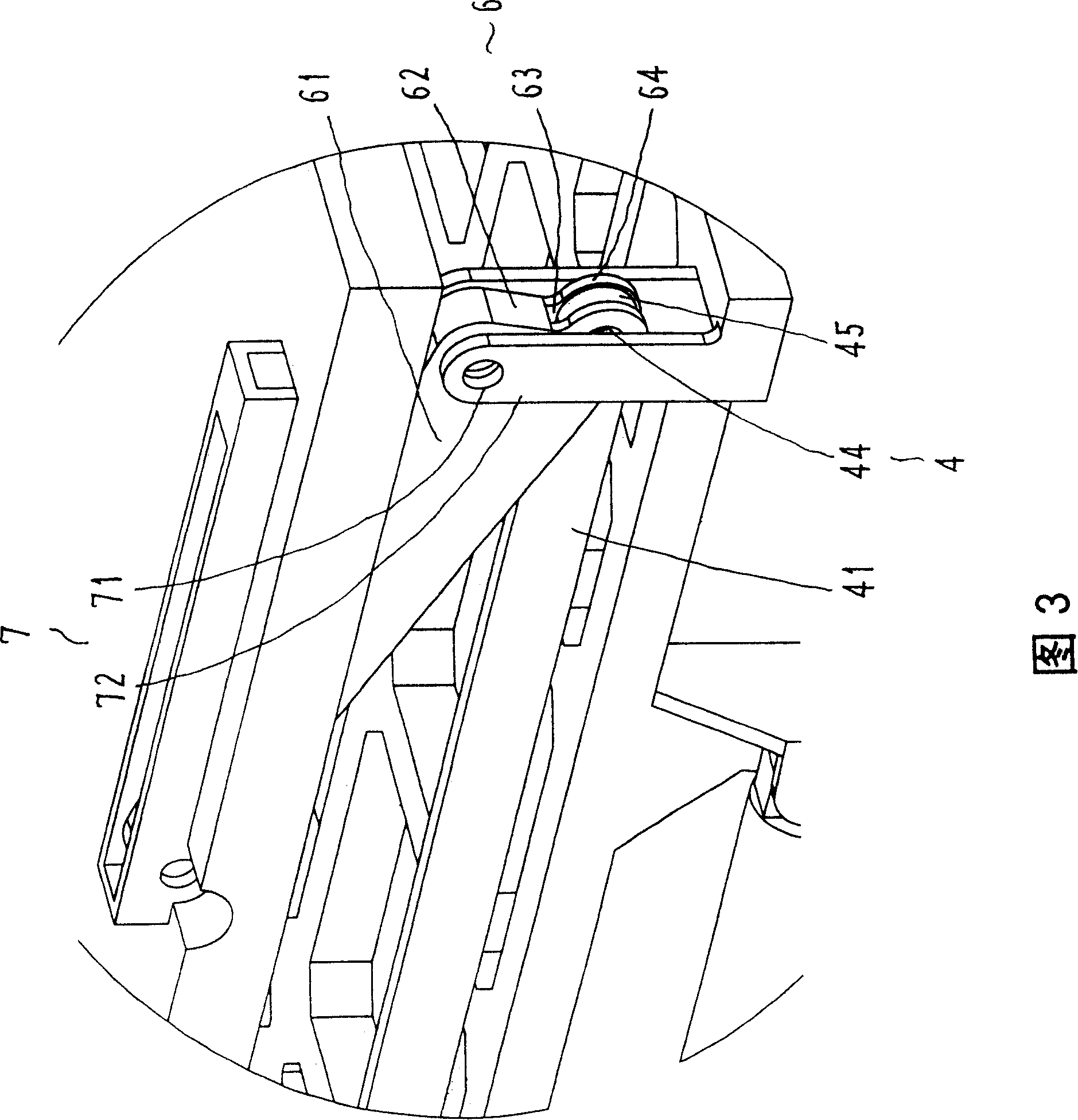Parallel-move hoistable platform without self-locking
A lifting platform, self-locking technology, applied in the direction of lifting devices, ships, cargo handling equipment, etc., can solve the problems of complex overall layout, inability to adapt, affecting the safety of personnel and goods, etc., to expand the scope of application and solve the problem of self-locking Effect
- Summary
- Abstract
- Description
- Claims
- Application Information
AI Technical Summary
Problems solved by technology
Method used
Image
Examples
Embodiment Construction
[0010] Referring to Figures 1 and 4, the non-self-locking translational lifting platform includes a translational lifting platform 1, a front link 2, a front hinge seat 3, a middle link 4, a cylinder 5, a rear link 6, a rear hinge seat 7 and a base platform 8. , All components are set on the basic platform.
[0011] The translational lifting platform 1 has the same or similar structure as the existing equipment. On both sides of the translational lifting platform 1 are symmetrically hinged a front link 2 and a rear link 6, and each of the front and rear links 2, 6 is hinged. The connecting lines are formed as the upper and lower sides of the parallelogram mechanism; the following explanations related to the mechanism refer to the components of a group of mechanisms on one side of the platform (the other side has the same symmetry).
[0012] The front link 2 is an L-shaped rod. As shown in Figure 2, the upper hinge point 21 is the axis of the hinge pin through which the translation...
PUM
 Login to View More
Login to View More Abstract
Description
Claims
Application Information
 Login to View More
Login to View More - R&D
- Intellectual Property
- Life Sciences
- Materials
- Tech Scout
- Unparalleled Data Quality
- Higher Quality Content
- 60% Fewer Hallucinations
Browse by: Latest US Patents, China's latest patents, Technical Efficacy Thesaurus, Application Domain, Technology Topic, Popular Technical Reports.
© 2025 PatSnap. All rights reserved.Legal|Privacy policy|Modern Slavery Act Transparency Statement|Sitemap|About US| Contact US: help@patsnap.com



